标签:ima 接下来 无法 后台 tco 解决 oid eth 中间件
将ASP.NET升级到ASP.NET Core之后,相信大家都会遇到HttpContext.Current无法使用的问题。这也是我们迁移ASP.NET Core必须解决的问题。
本文我们详细讨论一下,使用HttpContext的正确姿势。
先列一下使用HttpContext的具体场景:
1. 在Controller层访问HttpContext
2. 在中间件中使用HttpContext
3. 在数据访问层使用HttpContext
4. 在后台线程中访问HttpContext
5. 在Razor页面模型中访问HttpContext
6. 在Razor视图中访问HttpContext
可能还有其他的应用场景。接下来我们按场景一一示例解决。
首先本文用的是ASP.NET Core 3.1
一、新建一个ASP.NET Core Web应用程序
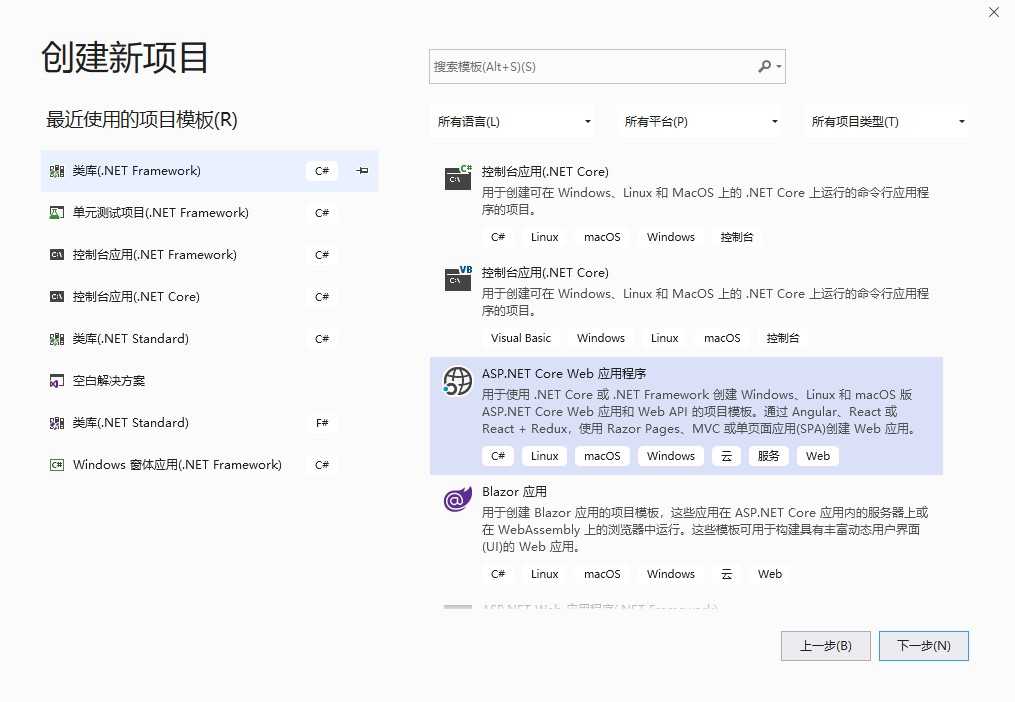
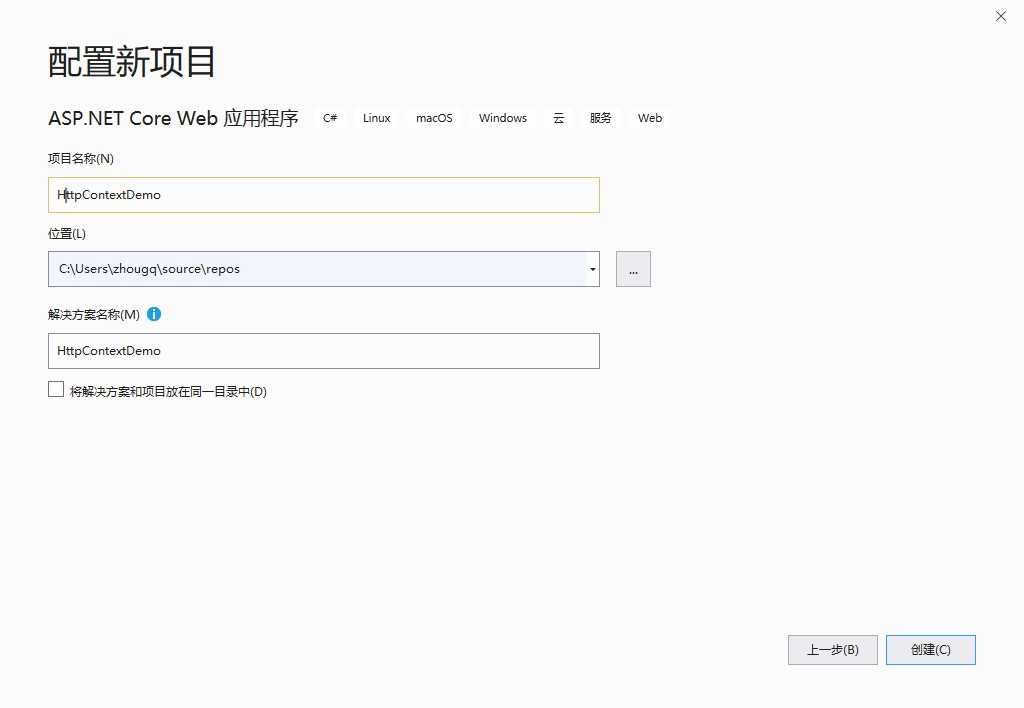
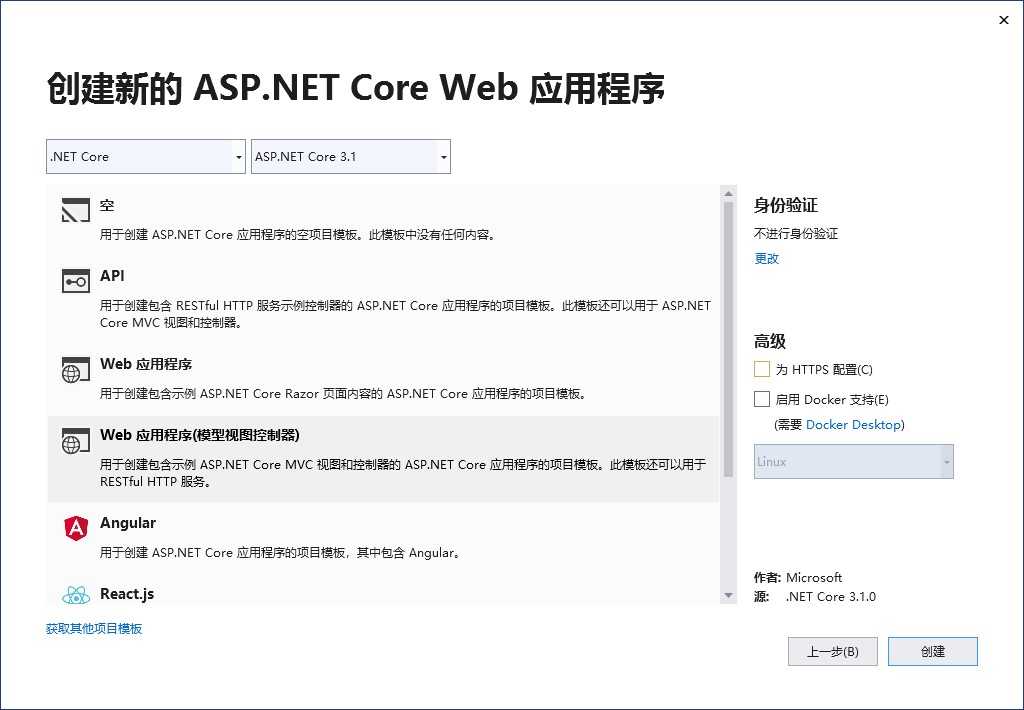
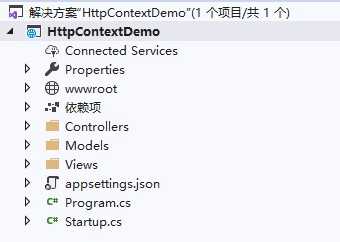
二、在Controller层访问HttpContext
示例代码中HomeController继承与Controller抽象类
Controller父类中继承与ControllerBase抽象类
其中ControllerBase抽象类有提供了对HttpContext的访问

所以,我们在Controller这一层可以按以下方式访问HttpContext:
1 public class HomeController : Controller
2 {
3 private readonly ILogger<HomeController> _logger;
4 private string customer;
5
6 public HomeController(ILogger<HomeController> logger)
7 {
8 _logger = logger;
9
10 customer = HttpContext.Request.Form["CustomerId"];
11 }
12 }
三、*在中间件中使用HttpContext*
自定义扩展中间件中,实现Invoke方法,HttpContext通过参数的方式传递到中间件的业务逻辑中。
public async Task Invoke(HttpContext context)
1 public class CustomerMiddleware
2 {
3 private readonly RequestDelegate _next;
4
5 public CustomerMiddleware(RequestDelegate next)
6 {
7 _next = next;
8 }
9
10 public async Task Invoke(HttpContext context)
11 {
12 // Do something with context near the beginning of request processing.
13 await _next.Invoke(context);
14
15 // Clean up.
16 }
17 }
四. 在数据访问层使用HttpContext
声明一个User的仓储类,实现对User的持久化。如下代码中,
UserRepository依赖 IHttpContextAccessor
通过ASP.NET Core依赖注入容器解析依赖链并创建 UserRepository 实例时,就会注入依赖项。
1 public class UserRepository: IUserRepository
2 {
3 private readonly IHttpContextAccessor _httpContextAccessor;
4
5 public UserRepository(IHttpContextAccessor httpContextAccessor)
6 {
7 _httpContextAccessor = httpContextAccessor;
8 }
9
10 public void AddUser(User user)
11 {
12 var username = _httpContextAccessor.HttpContext.User.Identity.Name;
13
14 //Save User to DB
15 }
16 }
使用ASP.NET Core内置的*依赖项注入容器*来注册依赖项。 依赖项注入容器向任意类提供 *IHttpContextAccessor*,以供类在自己的构造函数中将它声明为依赖项:
public void ConfigureServices(IServiceCollection services)
{
services.AddControllersWithViews();
services.AddHttpContextAccessor();
services.AddTransient<IUserRepository, UserRepository>();
}
五、在后台线程中访问HttpContext
HttpContext 不是线程安全的。 在处理请求之外读取或写入 HttpContext 的属性,可能会导致 NullReferenceException空引用异常。
如何再后台线程中使用HttpContext呢?推荐的做法:
\1. 在请求处理过程中复制所需的数据。
\2. 将复制的数据传递给后台任务。
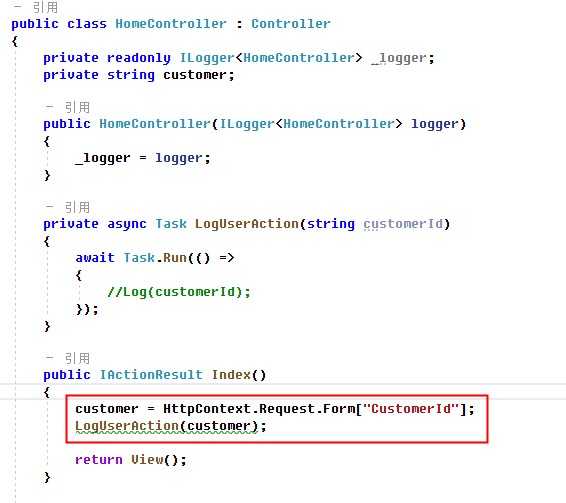
六、在Razor页面模型中访问HttpContext
Razor页面模型的父类PageModel提供了HttpContext的访问,如下代码:
1 public class UserModel: PageModel
2 {
3 public string Message { get; set; }
4
5 public void OnGet()
6 {
7 Message = HttpContext.Request.PathBase;
8 }
9 }
七、 在Razor视图中访问HttpContext
Razor 视图通过视图上的 RazorPage.Context 属性直接公开 HttpContext
@{
ViewData["Title"] = "Home Page";
var username = Context.User.Identity.Name;
}
以上是近期总结的6种HttpContext访问的正确姿势。详细参考了以下链接:
https://docs.microsoft.com/zh-cn/aspnet/core/fundamentals/http-context?view=aspnetcore-3.1
分享给大家。
[转].NET Core技术研究-HttpContext访问的正确姿势
标签:ima 接下来 无法 后台 tco 解决 oid eth 中间件
原文地址:https://www.cnblogs.com/Study-Csharp/p/12590848.html